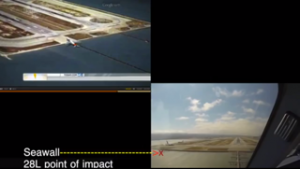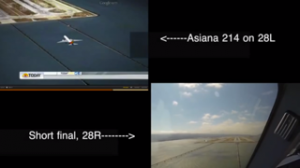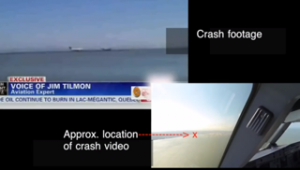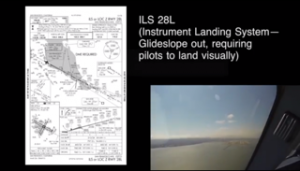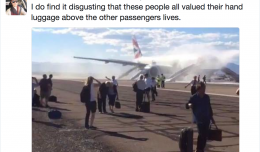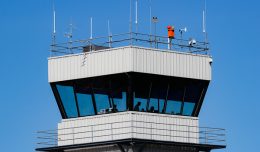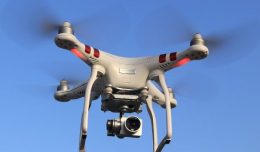The San Francisco crash of Asiana 214 during perfect VMC conditions (but with the ILS out of service) has prompted many questions. And the apparent answers have prompted many more questions about why the Boeing 777 was allowed to impact a seawall in advance of the threshold to runway 28L.
In a public hearing yesterday, the NTSB said it is focusing on several issues in the Asiana 214 crash, which killed three Chinese teens and injured 180 other passengers:
- Pilot confusion on automated thrust settings
- Lack of vertical guidance in the form of the ILS glideslope
- Possible lack of training in manual flying by foreign (non-U.S.) carriers
- Cultural resistance to suggestions and commands issued to the captain by a less-senior pilot (the Asiana 214 captain failed to respond to the first officer’s warnings no less than four times)
By analyzing cockpit voice recorder and flight data recorder (aka the “black boxes”) information and in addition to the flight management computer, flight controller, and the navigation radio data, the NTSB has found that the aircraft itself was functioning perfectly. While investigators may have some criticisms about the Boeing’s lack of anti-stall features that Airbus systems have, aircraft design and function does not appear to be a causal factor in the crash. (Airbus’s Autothrust system automatically reverts to full power at critically low speeds; Boeing’s Autothrottle system does not. An Airbus-type failsafe system—while not infallible—may have prevented this accident.)
In a study released this week, the Wall Street Journal analyzed the rate of go-arounds (aborted landings) during the KSFO ILS outage. While go-arounds increased for all air carriers, foreign carriers initiated go-arounds 37% more often than domestic carriers. And Asiana, a South Korean carrier, had the highest number of any carrier.
Both the NTSB and WSJ findings fall quite dramatically in line with an exhaustive, years-long FAA study, released last month, citing pilot over-reliance on — and lack of understanding of — automation as the top danger in cockpits today. (See related commentary.)
The FAA study, encompassing years of global data, suggest that pilots’ skills worldwide are deteriorating due to increasing reliance on automation. Moreover, complacency and poor monitoring of the autopilot has led to a possible doubling of cockpit errors. While the study acknowledges that automation has made aviation orders of magnitudes safer overall, basic stick and rudder skills seem to be going the way of the Spruce Goose. While the study does not appear to differentiate between countries, the data may point to a much more dramatic difference between Western carriers and others. The WSJ study appears to directly back this up as well.
But Western carriers are not immune. Indeed, complacency and lack of awareness while transitioning from automated to manual flight may be contributing factors in the head-scratching B747 Dreamlifter landing at the wrong airport last month.
Historically, most accidents result from a string of errors. Asiana 214 is no exception. Sadly, it appears that those errors did not end at impact. After any crash, an immediate evacuation is critical. Inexplicably, the crew delayed evacuation, during which time a fire broke out. Had the crew delayed evacuation any longer, the results could have been catastrophic. Moreover, several of the Asiana emergency slides were found to have been improperly installed, causing more delay in evacuation.
If you hit your car’s cruise control “Resume” feature and it failed to reengage, would you wait for it to slow until an accident? In short, this is what the Asiana 214 pilots appear to have done. Similar to CFIT (Controlled Flight Into Terrain) accidents, it appears that the Asiana 214 pilots simply flew a perfectly good airplane into the ground.
By all accounts, it appears that investigators and regulators will be taking some serious, hard looks at Asiana’s—and other foreign carriers’—training, maintenance and cultural issues.
Cockpit view of SFO Rwy 28 approach, produced by the author:
Eric “Cap’n Aux” Auxier is an airline pilot by day, writer by night, and kid by choice. A320 Captain for a major U.S. airline, he is a freelance writer, novelist and blogger (capnaux.com). His second novel, The Last Bush Pilots, captured the coveted Amazon TOP 100 Breakthrough Novels in 2013. Mr. Auxier makes his home in Phoenix, Arizona.



